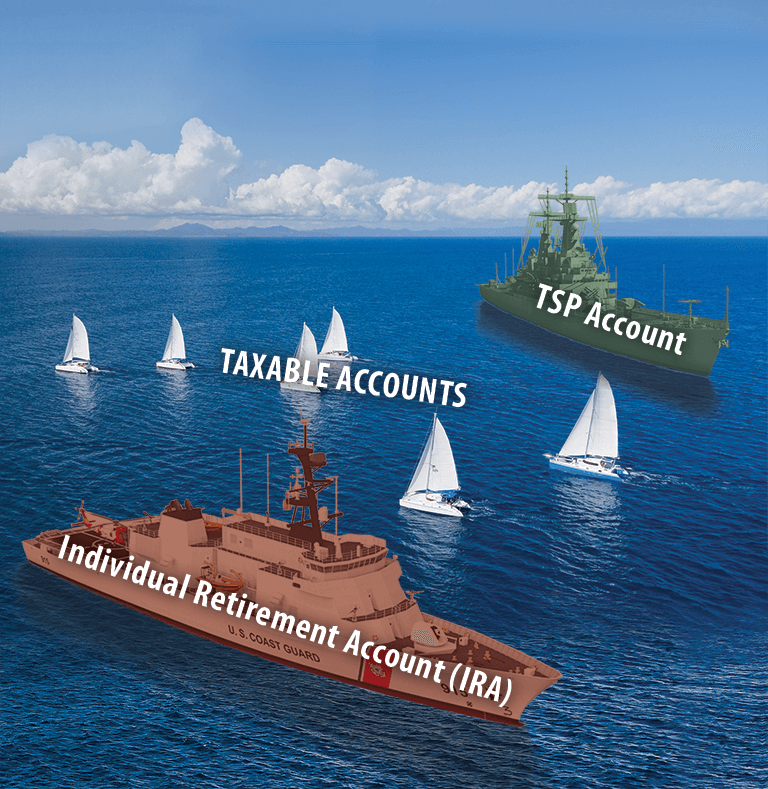A rule-of-thumb for achieving long-term financial security is to save 10% to 15% of your pretax income. After you’ve contributed enough to your TSP account to qualify for the full match, you may want to explore other investment opportunities.
At the top of the list is a low-cost individual retirement account (IRA). It’s a good way to gain exposure to a broader range of investments than the TSP offers and further diversify your portfolio. With an IRA you can take advantage of tax-deferral, just as you can with TSP.
In addition, you may want to open a taxable account. Your dividends, interest earnings, and capital gains are taxed in the year they’re paid. But the rate at which those taxes are calculated is always lower than the tax rate that applies to your regular income.
TAKING ADVANTAGE OF AN IRA
An IRA can be a valuable tool for managing your investments.
While you usually can’t withdraw from an IRA without penalty before you turn 59, you can take out money if you need it for certain specific needs. These include buying a first home, paying a child’s college tuition, or covering medical expenses. You’ll owe income taxes, but no penalty. And, if you have a Roth IRA, you can withdraw up to $10,000 tax free to buy a first home.
You can roll over, or move, money from your TSP account or other employer plan into an IRA when you leave your job for any reason. There are no penalties, no taxes due, and no loss of tax-deferred status. Like money in an employer plan, up to $1 million in an IRA is protected against creditors. The same is true of all the money in your TSP account. What this protection means is that you can’t be forced to withdraw to pay off any debts except federal tax liens.
